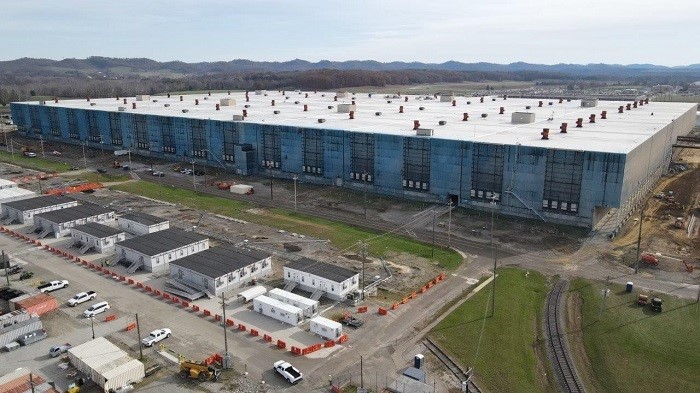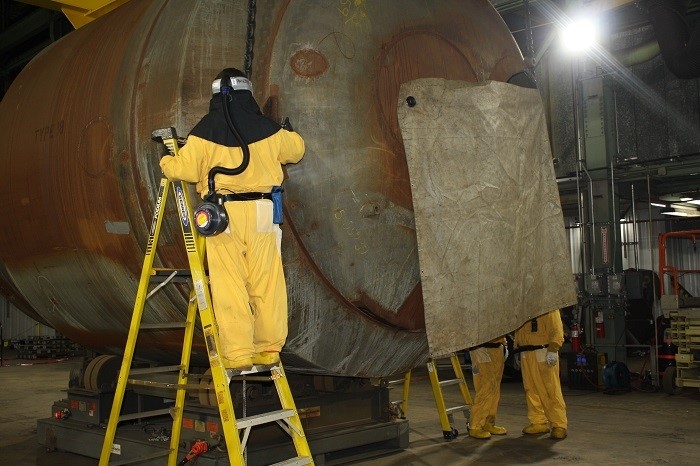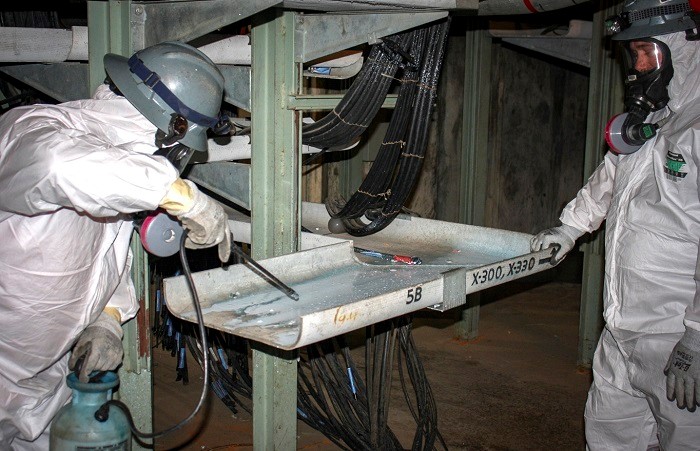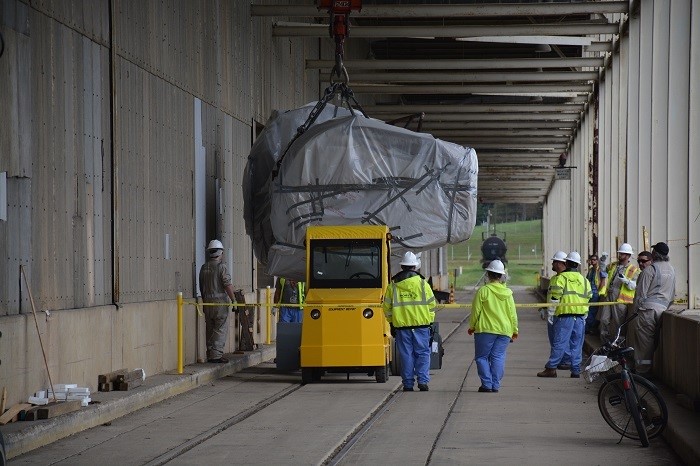Portsmouth Site personnel ended 2024 by accomplishing a U.S. Department of Energy Office of Environmental Management priority for the year.
Office of Environmental Management
January 7, 2025PIKETON, Ohio — Portsmouth Site personnel ended 2024 by accomplishing a U.S. Department of Energy Office of Environmental Management (EM) priority for the year: completion of deactivation of the 33-acre X-333 Process Building, the second of three massive process buildings at the site to be deactivated to prepare for demolition.
Watch a video about the project.

An aerial view from the northwest corner of the X-333 Process Building. The building footprint is 33 acres, which compares to 24 football fields.
“The deactivation of the X-333 Process Building marks a milestone for the cleanup mission of the Portsmouth Paducah Project Office (PPPO),” said Joel Bradburne, PPPO manager. “We are continuing our mission to safely demolish the site’s three massive former enrichment process buildings safely and compliantly, emplacing the debris in the On-Site Waste Disposal Facility (OSWDF).”
Deactivation involves characterizing the building and equipment from a radiological standpoint; disconnecting process equipment; segmenting, crushing and preparing waste for shipment or disposal; removing asbestos and other hazardous waste; isolating and disconnecting utilities; and other work.
Crews finished deactivating and demolishing the first of the three process buildings — X-326 — in June 2022. As part of deactivation work, crews took over 1 million measurements of the quantities of uranium deposits that remained from enrichment operations in dozens of miles of process pipes, and removed over 7,000 process components.
To compare, the X-333 deactivation involved taking more than 130,000 characterization measurements over 208 miles of piping, disconnecting and segmenting 626 massive enrichment converters, and disposing of 13,000 cubic yards of deactivation debris at OSWDF.

Project Worker Tony Kinnamon works inside the X-333 Material Sizing Area to segment converters. The area was created to expedite resizing efforts, save on disposal costs and space, and reserve portions of the equipment for potential nickel recovery efforts.
“The personnel at the Portsmouth Site are commended for their successful deactivation while making improvements to the processes with lessons learned and maintaining diligence in safety,” Portsmouth Site Lead Jeremy Davis said. “We have made sure that lessons learned in the X-326 Process Building deactivation were applied to X-333 Process Building and will be shared across PPPO for deactivation of remaining process buildings.”
One of the main challenges at X-333 was the size of the equipment. The conversion equipment in X-326 fit in shipping containers for disposal offsite. However, X-333 was the entry point for feed material and had the largest equipment for uranium enrichment, with some converters more than 20 times larger than those in X-326.
“Due to the larger size of the components in the X-333 Process Building, deactivation was very different. In the X-333 Process Building, we had the challenge of removing, segmenting and then compacting massive converter components,” Federal Project Director Jud Lilly said. “The team had to figure out and perfect each step as we proceeded but were able to continuously improve their work practices to maintain safety and get the job done.”

Laborers Daniel Jordan, left, and George Roberts apply fixative to cable trays in the basement of the X-333 Process Building. The trays are being removed as part of the facility’s deactivation process.
Another X-333 challenge was incorporating a system that measures equipment up to 12 feet high, 12 feet wide and 20 feet long.
“The strategic placement of the Large Component Assay System (LCAS) adjacent to the X-333 Process Building was instrumental in efficiently completing more than 1,750 measurements,” said Greg Wilkett, site project director for Fluor-BWXT Portsmouth, the Portsmouth Site deactivation and demolition contractor. “The focus tends to be on the larger deactivation tasks, such as the converters, but every auxiliary process gas system must be deactivated and addressed before declaring deactivation complete.”

Deactivation and demolition crews lower a compressor in the X-333 Process Building track alley for transport to the X-326 pad for size reduction. The compressors are some of the largest process gas equipment used in the building during uranium enrichment operations that ceased in 2001. Crews surveyed and evaluated the compressors to determine the appropriate path for disposal before removing them.
Crews disconnected and disassembled more than 600 converters in the Material Sizing Area. Following disassembly, they measured internal components, such as tube bundles, from the converters in LCAS to verify compliance with disposition requirements. Workers crushed and placed a total of 623 tube bundles in containers in the nearby X-343 Feed Facility for potential nickel recovery efforts.
Deactivation crews collected and staged containers of excess materials for segregation and inspection by Waste Operations personnel who determined the proper disposal path — OSWDF or for shipment offsite.
Demolition of X-333 is set to begin this spring.
-Contributor: Michelle Teeters
To receive the latest news and updates about the Office of Environmental Management, submit your e-mail address.

